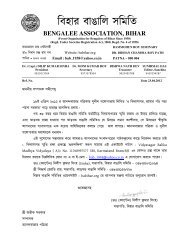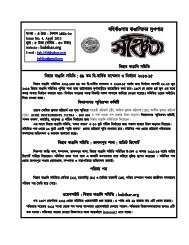Bengali Report - Bengalee Association Bihar
Bengali Report - Bengalee Association Bihar
Bengali Report - Bengalee Association Bihar
Create successful ePaper yourself
Turn your PDF publications into a flip-book with our unique Google optimized e-Paper software.
SECTION III<br />
BENGALI REFUGEES FROM EAST PAKISTAN (BANGLADESH)<br />
At the time of independence in 1947, India was divided into two countries, Pakistan<br />
being carved out of it. In the process, two provinces, Punjab and Bengal, were also<br />
divided, Hindu-dominated areas falling in India, and those dominated by Muslims<br />
forming part of Pakistan. The process was particularly painful, since it implied<br />
displacement of a large number of families in both Punjab and Bengal. For those<br />
Hindu <strong>Bengali</strong>s who had to leave East Pakistan (now Bangladesh), the government<br />
had to undertake a massive rehabilitation programme. Since not all of them could<br />
be accommodated in West Bengal, they were moved to areas like <strong>Bihar</strong>, Madhya<br />
Pradesh, Andaman-Nicobar Islands, etc. In <strong>Bihar</strong>, they were settled mostly in old<br />
Champaran district (now dividend into two districts), but some of them were also<br />
settled in north-eastern districts of Purnea and Katihar. Unaware as they were of<br />
local conditions and local language, the process of rehabilitation was a long one for<br />
many of them, and even now these refugee <strong>Bengali</strong> population face some serious<br />
problems. This section is focused on this refugee <strong>Bengali</strong> population settled in<br />
<strong>Bihar</strong>.<br />
Domicile Status<br />
Earlier, it was mentioned that the <strong>Bengali</strong> population in <strong>Bihar</strong> is largely a<br />
heterogeneous category, comprising several sub-categories, based largely on their<br />
mode and time of arrival in <strong>Bihar</strong>. Broadly speaking, these sub-categories are— (a)<br />
original domicile of <strong>Bihar</strong>, (b) those who came as refugees and were rehabilitated<br />
by the government, (c) those who came as refugees, but were not rehabilitated, and<br />
(d) those who migrated to Bihgar on their own, either before or after independence.<br />
The distribution of the sample households among these four important groups is<br />
presented in Table 18. Since the survey had a large sample from West Champaran,<br />
no less then two-thirds (67.7 percent) of the households are refugee <strong>Bengali</strong><br />
27




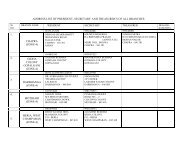
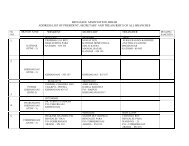
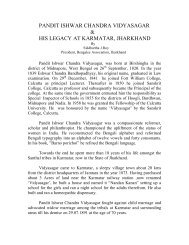
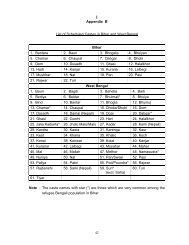
![nandan kanan[1] - Bengalee Association Bihar](https://img.yumpu.com/17028545/1/190x245/nandan-kanan1-bengalee-association-bihar.jpg?quality=85)
